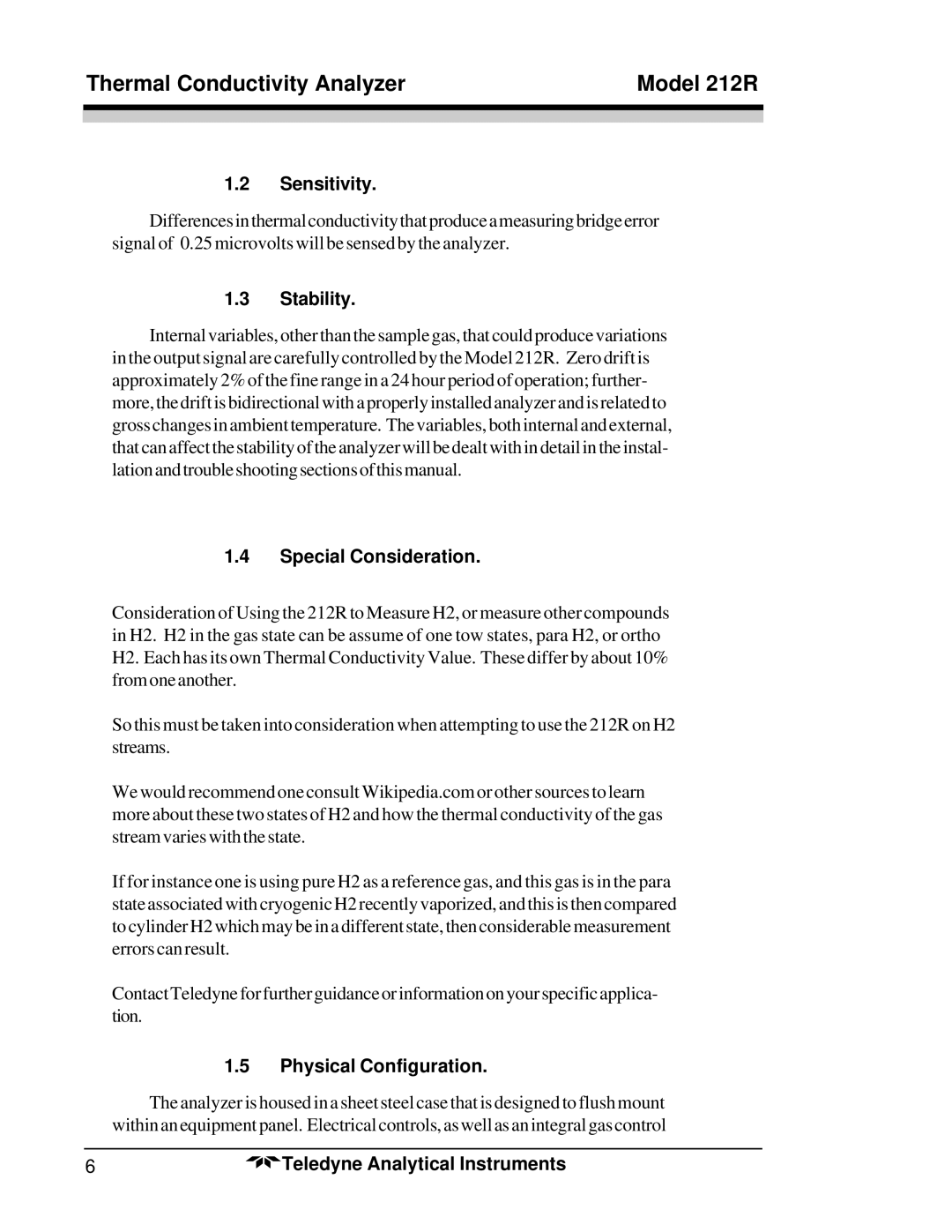212R specifications
Teledyne 212R is a state-of-the-art underwater acoustic modem designed for robust communication in various marine environments. This advanced device is based on established principles of underwater acoustics and modern digital signal processing technologies, making it an optimal choice for applications ranging from oceanography to underwater robotics.One of the standout features of the Teledyne 212R is its high data transmission capabilities, allowing for reliable communication at distances of up to several kilometers depending on environmental conditions. The modem supports various data rates, enabling flexible adaptation to the needs of different applications. This versatility makes it suitable for both low-bandwidth telemetry and high-data applications, such as video streaming from underwater drones.
The Teledyne 212R employs advanced modulation schemes that enhance its performance in challenging conditions. These modulation techniques, combined with sophisticated error correction algorithms, ensure the integrity of data transmission even in noisy environments. This resilience is crucial as it enables the modem to maintain communication in the presence of marine life, background noise, and varying temperatures.
Another remarkable characteristic of the Teledyne 212R is its compact and rugged design. Built to withstand harsh marine conditions, the modem is encapsulated in a pressure-resistant housing, making it suitable for deep-sea operations. Its durability ensures longevity and reliability, reducing the need for frequent maintenance or replacement, which can be costly in remote underwater settings.
Moreover, the modem features an array of integrated sensors that allow for real-time environmental monitoring. This capability can be pivotal for research organizations studying marine ecosystems or for oil and gas companies conducting underwater surveys. The ability to collect and transmit environmental data alongside operational data streamlines data-gathering efforts.
Ease of integration is another key aspect of the Teledyne 212R. It is compatible with a multitude of existing marine technologies and communication protocols, allowing for seamless deployment in diverse systems. This adaptability is essential for users requiring collaborative operations across multiple platforms, such as Autonomous Underwater Vehicles (AUVs) and remotely operated vehicles (ROVs).
In summary, the Teledyne 212R combines high-performance data transmission, advanced modulation techniques, rugged design, and environmental monitoring capabilities. This makes it an essential tool for anyone engaged in underwater research, exploration, or resource management, establishing it as a go-to choice in the field of underwater communication.

